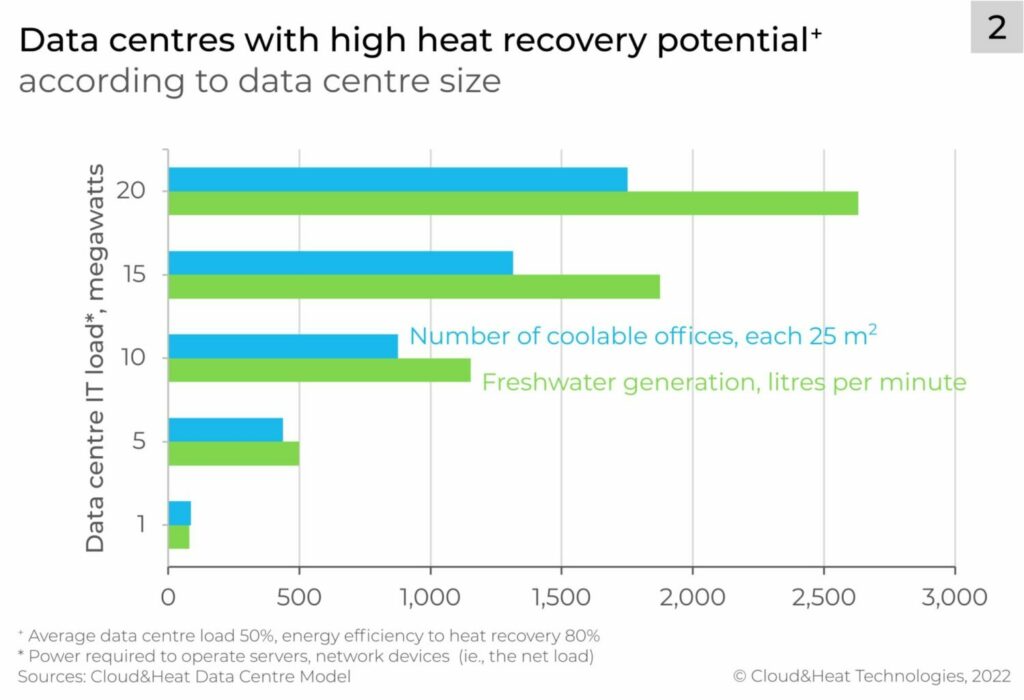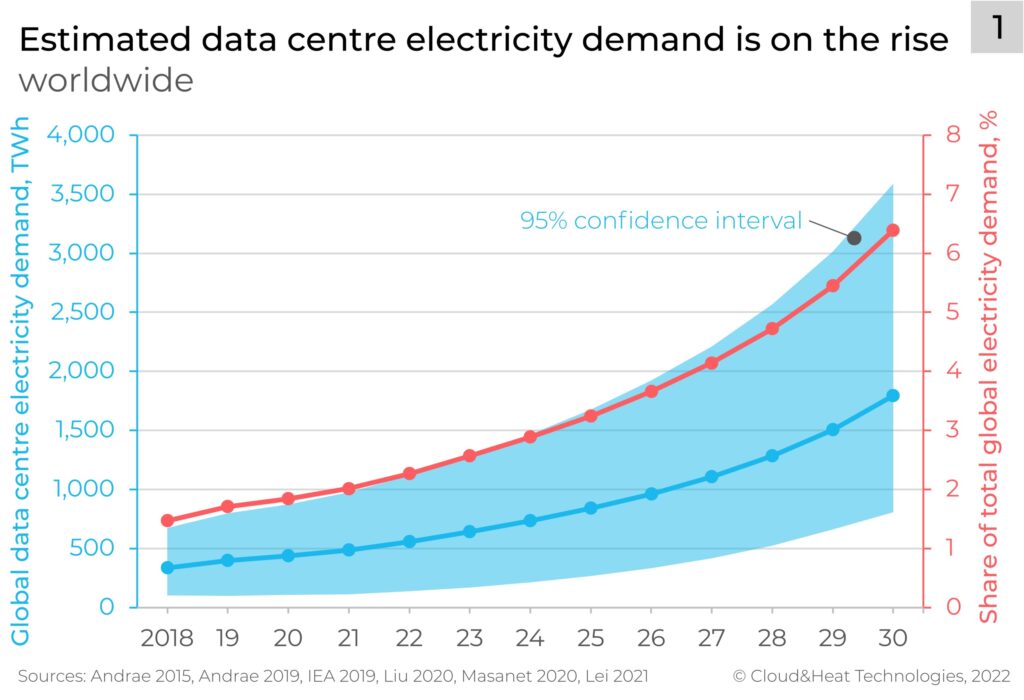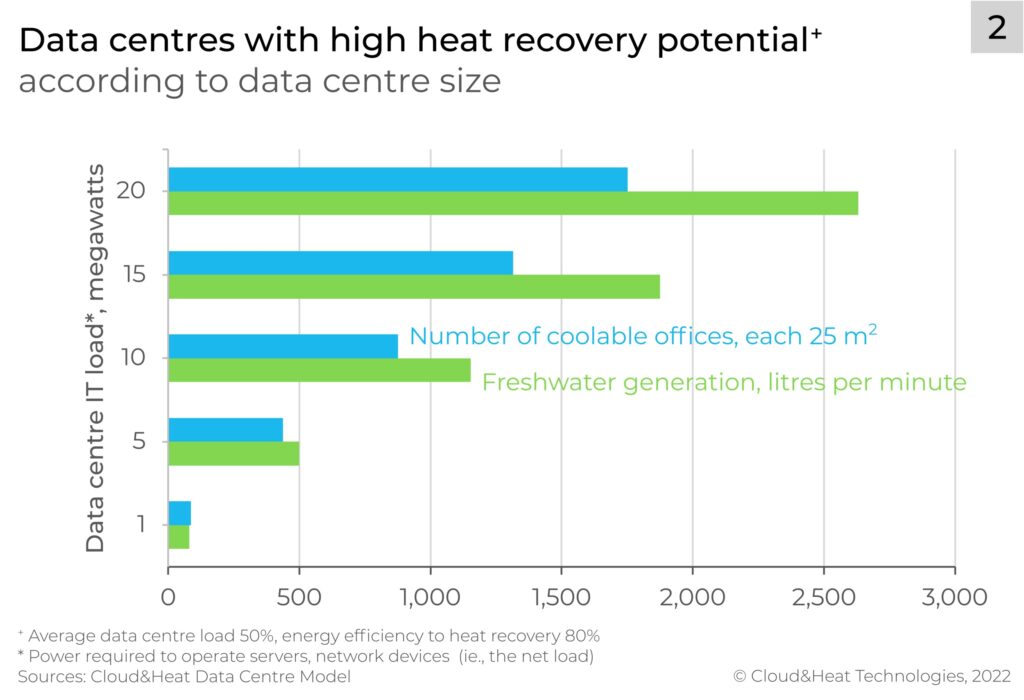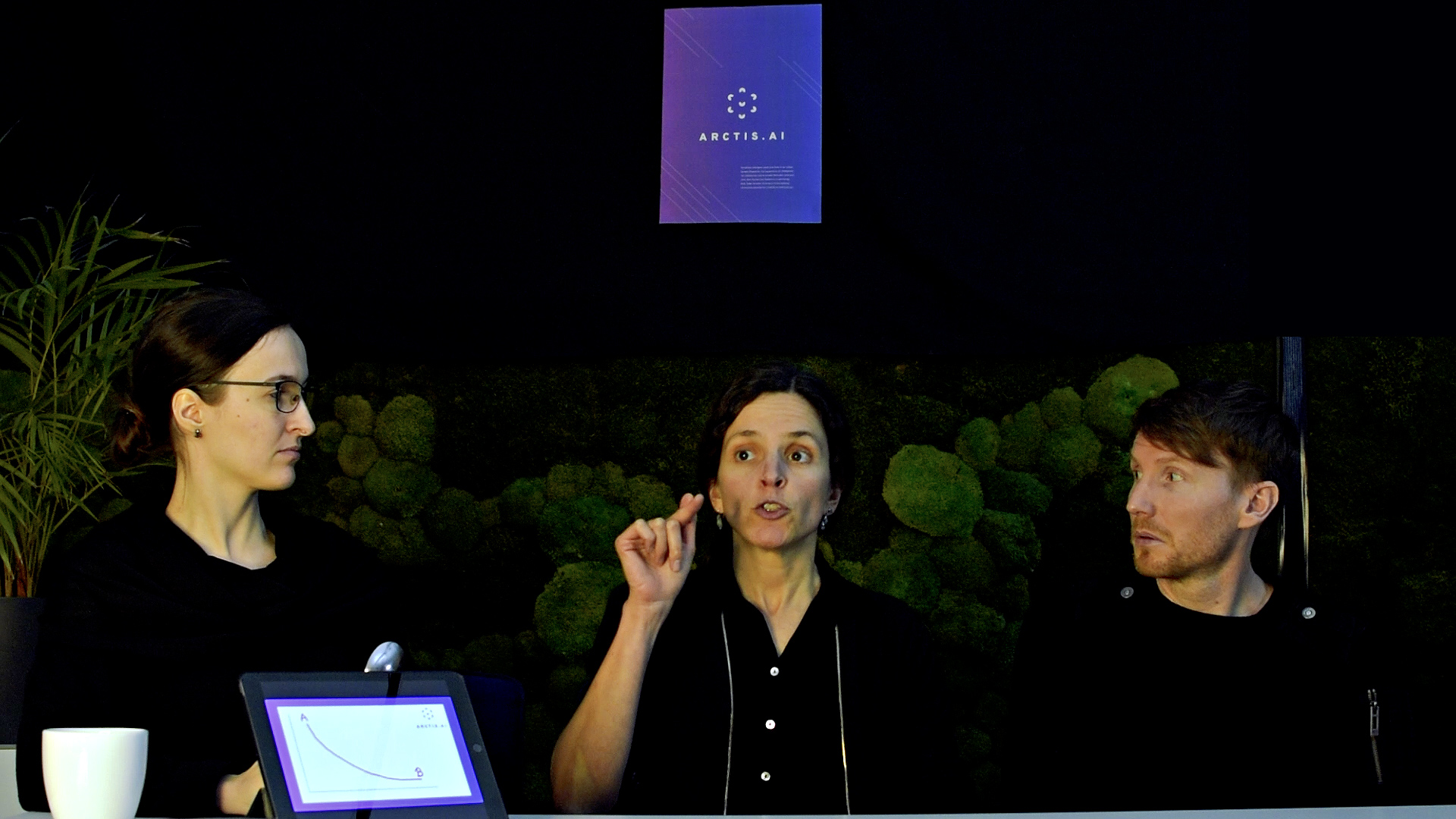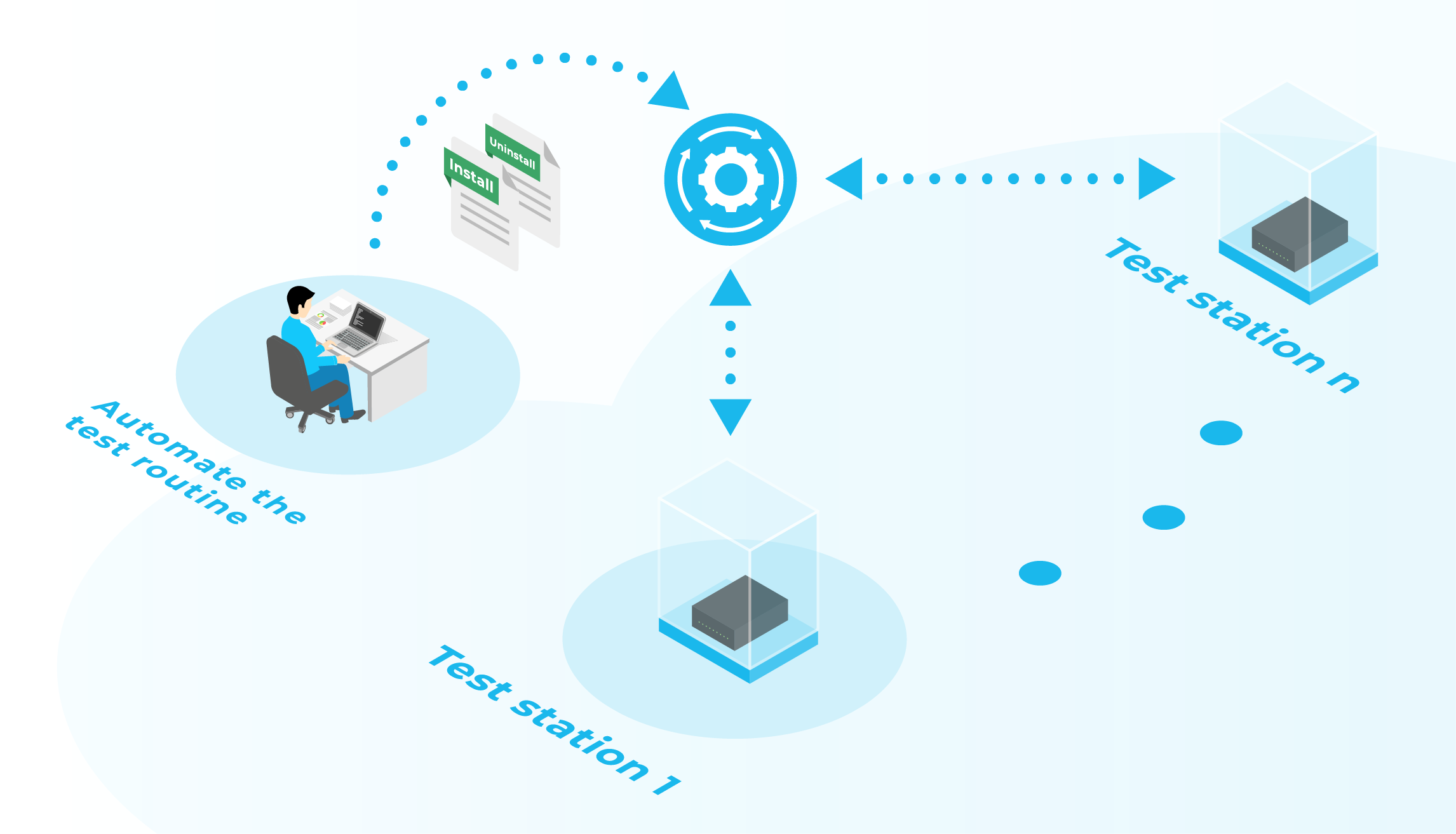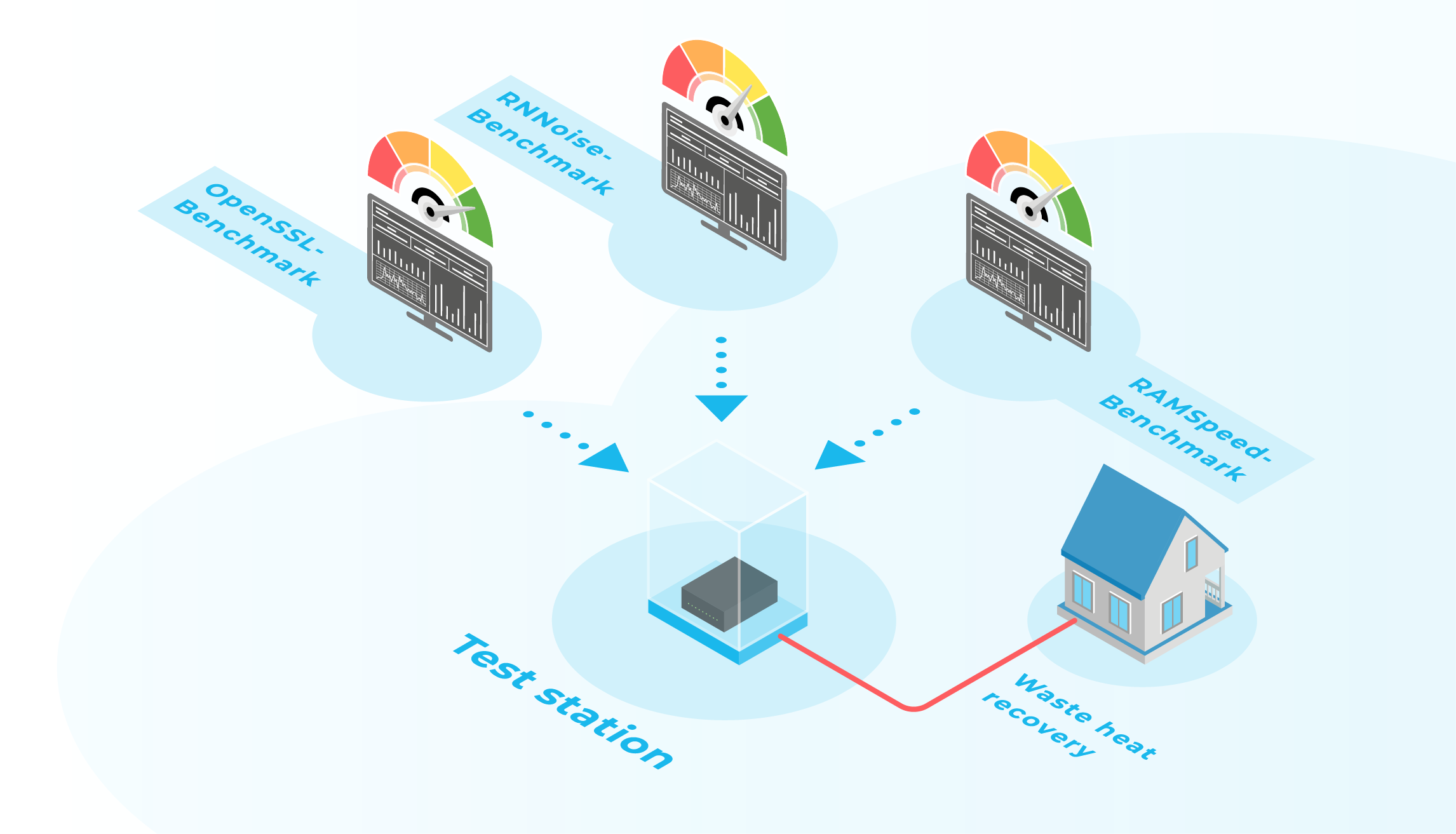Data centres use a tremendous amount of energy. Based on several studies, we estimate they are currently responsible for about 2% of the electricity consumed worldwide. Analysts expect this number to rise to 6.5% by 2030 (refer to chart 1)[1]. Data centres convert all required electricity into less valuable heat. Furthermore, the machines used to dissipate this heat require additional energy. In the past, this extra energy amounted to the same (or occasionally even more than) used to run the servers, the so-called IT load. A concerted effort has recently reduced this amount. However, a typical data centre requires 10–70% of its IT load for cooling[2].
All energy is linked to a certain extent to carbon dioxide emissions, which contribute to the increasing greenhouse effect. To reduce climate change, the world community has decided to boldly act to keep global warming below 1.5 K (see the Paris and COP26 agreements)[3]. We can only achieve this if our energy-consuming systems become more efficient than today and the production of electrical power becomes carbon-free in the next twenty years.
“To overcome this dilemma, we must incorporate data centres in local circular economies”, says Dr Jens Struckmeier, Chief Technology Officer and founder of Cloud&Heat Technologies, an innovation integrating company. Cloud&Heat’s cooling technology captures heat in a high-temperature liquid that can drive utility services, such as heating, cooling, or seawater desalination. On the one hand, this positively affects carbon emissions and climate prospects. On the other, it enables new business concepts.
Including data centres in local circular economies is the answer
Communities are strengthened and prosper when data centres are included in their local circular economies. For instance, solar-electric and wind turbine power plants provide almost carbon-free electricity, and batteries and hydrogen facilities store it for the future. Data centres provide the IT services required for our companies and daily life, such as cloud computing, storage, messaging, and streaming. Reusing waste heat and recycling components becomes vital. It allows us to save energy and other resources and minimise harmful waste.
This cooling technology’s secret ingredient is special cooling kits mounted to the hottest components in the data centre – the processors, network and memory chips – which chill them with a liquid. In this way, the overhead for data centre cooling is just a low percentage of the server energy. Leading the heat off into a liquid at high temperatures of up to 60 °C allows us to use it immediately for many purposes.
Imagine skyscrapers with flats, offices, hotels, and restaurants warmed by server heat – at low cost and carbon-free! Cloud&Heat is already contributing to the heating in the Eurotheum, the former building of the European Central Bank in Frankfurt, Germany. How great would it be to have an aquapark heated by regenerative sources? Integrated Cloud&Heat technology can even distribute the heat to other places in district heating grids. For example, Vattenfall, a Swedish utility company, operates two of its container data centres south of Stockholm and will eventually heat the nearby households with up to 500 kilowatts of thermal power.
What about a hot climate?
Many people live in regions where heating is not a viable option for heat recovery. Instead, they prefer a breeze of chilled air. A unique cooling machine converts high-temperature waste heat into low-temperature cooling energy. By combining this machine with a data centre, we can use cooling energy for air-conditioning in the building. If a data centre is placed close to greenhouses, industrial sites and the like, these could directly benefit from this cooling energy. Some data centres, such as the CoolMUC in Garching[4], Germany, already use this technology and support building air-conditioning systems. We estimate that a one-megawatt data centre can cool up to almost 90 offices in a hot climate zone (see chart 2)[5].
Drought, rainfall shortage, and decreasing groundwater levels threaten almost 20% of the world population[6]. In regions such as the Gulf, the mid-west of the US, or vast parts of Africa, salt must be removed from seawater for freshwater production. Others must import water. However, technology for seawater desalination – multiple-effect distillation – perfectly fits with data centres and works simultaneously as a cooling machine. The water is generated whilst cooling the data centre and can irrigate fields outdoor or inside greenhouses or even supply the public water grid. This is a boost for the local autonomy. If all data centres worldwide were equipped with this technology, they could diminish the thirst of 15 million drought-threatened people with two litres per person per day[7]. A one-megawatt data centre can produce up to 80 litres of freshwater per minute (see chart 2)[8].
New business models arise
Joining data centre services and computational load optimisation with renewable energies and heat utilisation has two effects. Firstly, it increases the energy efficiency of the local community and, secondly, it facilitates lucrative business models. Innovative companies can expand their portfolios and offer different products or services to their clients. For instance, utility companies often already have a fibre-optics grid for fast internet. Therefore, they can provide extra IT services following local rules and use the waste heat for their core business. Smart-city developers can take great advantage of such concepts since they aim for efficient, effective, automated, and artificial-intelligence driven societies. On the one hand, they have an enormous computing demand. And on the other, smart cities are home to people, companies, and service providers that greatly benefit from circular input, such as heating, cooling, or freshwater. When rightly executed, the return on investment is usually within a few years.
We can approach a sustainable and liveable future by bringing data centres into the local circular economy, where computing demand and heat, cooling, or water demand come together. Depending on the actual conditions, different options are available to support communities. The return on investment will be a few years away.
Sources
- [1] Sources: Andrae 2015, Andrae 2019, IEA 2019, page 258, Liu 2020, Masanet 2020, Lei 2021; all downloaded 5th April 2022; average evaluation and confidence interval calculation by C&H
- [2] https://journal.uptimeinstitute.com/is-pue-actually-going-up/, downloaded 5th April 2022
- [3] Paris Agreement 2015, COP26 Climate Pact, both downloaded 5th April 2022
- [4] https://www.datacenter-insider.de/das-leibniz-rechenzentrum-kuehlt-mit-rechnerabwaerme-a-519944/, downloaded 5th April 2022
- [5] Based on calculations with our data centre efficiency tool. Assumptions: average data centre load 50%, the energy efficiency of heat recovery 80%, office space 25 m².
- [6] UNCCD 2021, downloaded 5th April 2022
- [7] Own calculation based on recent data centre energy consumption (see chart 1)
- [8] Based on calculations with our data centre efficiency tool. Assumptions: average data centre load 50%, the energy efficiency of heat recovery 80%
